- Best Varieties of Melons and Watermelons for a Bountiful Harvest
- Melons:
- Watermelons:
- Soil Preparation Tips for Growing Melons and Watermelons
- 1. Site Selection
- 2. Soil Testing
- 3. Organic Matter
- 4. Mulching
- 5. Fertilizer Application
- 6. Irrigation
- 7. Crop Rotation
- Planting Techniques for Melons and Watermelons
- 1. Soil Preparation
- 2. Choosing the Right Varieties
- 3. Starting Seeds Indoors
- 4. Direct Seeding
- 5. Transplanting Seedlings
- 6. Watering and Fertilizing
- 7. Pest and Disease Management
- 8. Harvesting
- Proper Watering and Irrigation Methods for Melons and Watermelons
- 1. Determine the Watering Schedule
- 2. Use Drip Irrigation
- 3. Mulch to Retain Moisture
- 4. Water in the Morning
- 5. Monitor Soil Moisture
- 6. Avoid Overwatering
- 7. Utilize Watering Aids
- 8. Adjust Watering as Fruits Ripen
- Pest and Disease Control Tips for Melons and Watermelons
- 1. Monitor Your Plants Regularly
- 2. Maintain Good Hygiene Practices
- 3. Use Natural Predators
- 4. Consider Physical Barriers
- 5. Practice Proper Watering Techniques
- 6. Remove Infected Plants
- 7. Apply Organic Pest Control
- Fertilization and Nutrient Management for Melons and Watermelons
- Soil Testing
- Choosing the Right Fertilizer
- Applying Fertilizer
- Side-Dressing
- Mulching
- Monitoring and Adjusting
- Pruning and Training Techniques for Melons and Watermelons
- 1. Remove Lateral Vines
- 2. Pinch off Suckers
- 3. Train the Vines
- 4. Prune for Air Circulation
- 5. Remove Excess Fruit
- 6. Support Heavy Fruits
- Harvesting and Storage Tips for Melons and Watermelons
- 1. Harvesting
- 2. Harvesting Techniques
- 3. Storage Tips
- “Question-Answer”
- What is the best time to plant melons and watermelons?
- How much space do melon and watermelon plants need?
- What kind of soil do melons and watermelons prefer?
- How often should I water melon and watermelon plants?
- Should I use mulch around melon and watermelon plants?
- How do I know when melons and watermelons are ready to harvest?
- Can I save seeds from my melons and watermelons to plant next year?
- “Video” 5 Steps to Growing Watermelon
Growing your own melons and watermelons can be a rewarding and delicious experience. These juicy fruits thrive in warm climates and can be a great addition to your garden or backyard. However, successfully growing melons and watermelons requires some expert knowledge and careful planning. In this article, we will share some valuable tips from experienced gardeners on how to grow melons and watermelons for a bountiful harvest.
Choose the right variety: There are many different varieties of melons and watermelons available, each with its own unique taste, size, and growing requirements. Before you start planting, do some research to find out which varieties are best suited for your climate and growing conditions. Some popular varieties include Cantaloupe, Honeydew, and Sugar Baby Watermelon.
Start with good soil: Melons and watermelons thrive in rich, well-draining soil that is high in organic matter. Before planting, prepare the soil by adding compost or well-rotted manure to improve its fertility and drainage. Avoid planting melons and watermelons in heavy clay soil, as it can lead to poor root development and waterlogging.
Provide ample sunlight and water: Melons and watermelons need plenty of sunlight to grow and ripen properly. Choose a location in your garden that receives at least 6-8 hours of direct sunlight per day. Additionally, these fruits require regular watering, especially during hot and dry periods. Keep the soil evenly moist, but be careful not to overwater as it can lead to root rot.
Use trellises or supports: Melons and watermelons can take up a lot of space in the garden. To maximize your growing area and prevent the fruits from rotting on the ground, consider using trellises or supports. These structures help to keep the vines off the ground, improve air circulation, and make harvesting easier.
Monitor for pests and diseases: Melons and watermelons are susceptible to a variety of pests and diseases, including aphids, powdery mildew, and cucumber beetles. Regularly inspect your plants for any signs of damage or infestation, and take appropriate action immediately. Applying organic insecticides or using natural pest control methods can help protect your plants from common pests and diseases.
Harvest at the right time: Knowing when to harvest your melons and watermelons is crucial to ensure optimal flavor and sweetness. Generally, melons are ready to harvest when they easily detach from the vine and have a strong sweet scent. Watermelons are ready when the skin turns dull and the bottom turns yellow. Harvest your fruits in the morning when the temperatures are cooler, and store them in a cool, dry place to extend their shelf life.
By following these expert tips, you can cultivate your own delicious melons and watermelons that are packed with flavor. Be patient, as these fruits take time to grow and ripen. With proper care and attention, you’ll be rewarded with a bountiful harvest that you can enjoy all summer long.
Best Varieties of Melons and Watermelons for a Bountiful Harvest
Choosing the right varieties of melons and watermelons is essential for a bountiful harvest. Here are some of the best varieties that you can consider planting:
Melons:
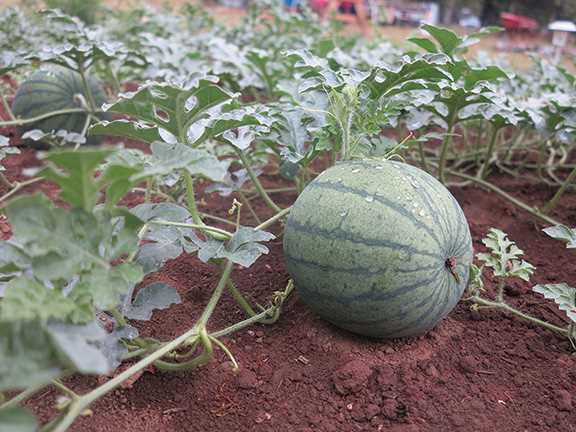
- Cantaloupe: This popular melon variety is known for its sweet and juicy orange flesh. Recommended varieties include Hale’s Best, Sugar Cube, and Athena.
- Honeydew: Honeydew melons have a smooth, pale green skin and a sweet, green flesh. Some popular varieties to try are Honey Gold, Orange Dew, and Genesis.
- Charentais: Charentais melons are small, round melons that have a deep orange flesh and a distinctive aroma. Consider planting varieties such as Noir des Carmes, Savor, and Cavaillon.
Watermelons:
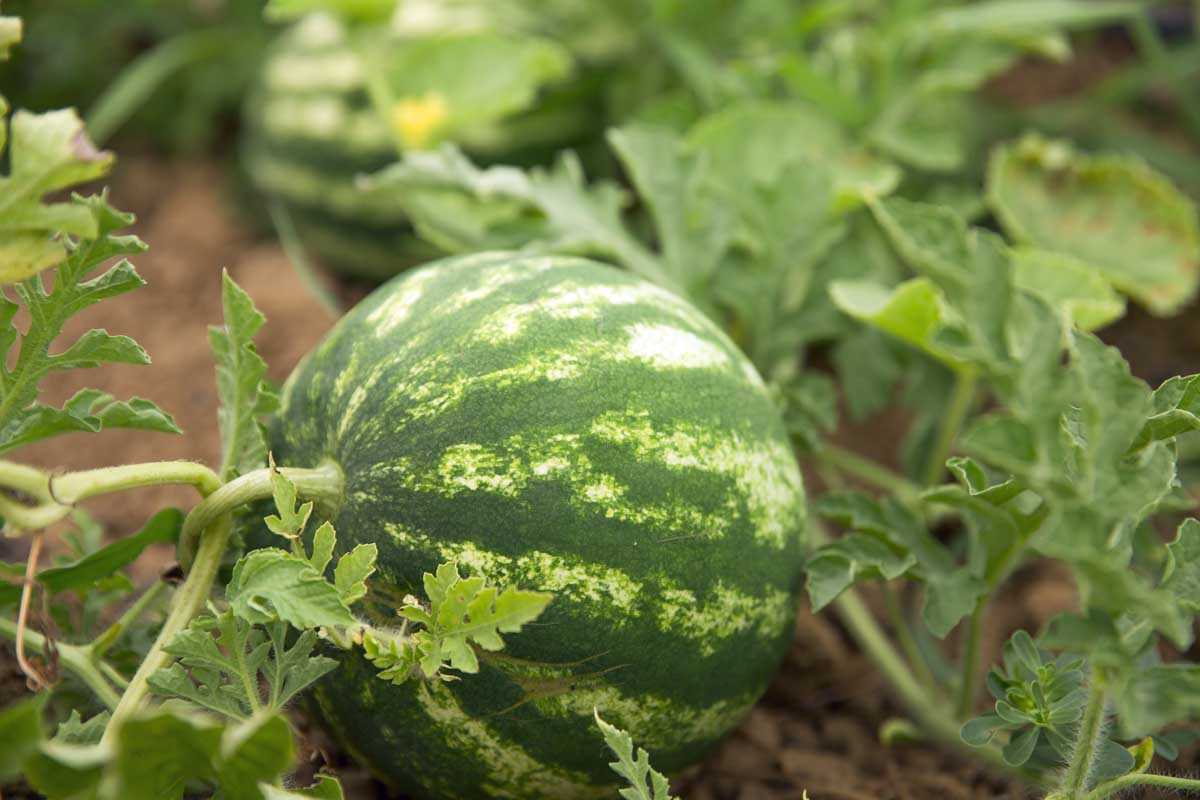
- Sugar Baby: Sugar Baby is a popular watermelon variety that has a dark green rind and a sweet, deep red flesh. It is known for its compact size, making it suitable for smaller gardens.
- Crimson Sweet: Crimson Sweet is a classic watermelon variety with a green-striped rind and a sweet, crisp red flesh. It is known for its high sugar content and excellent flavor.
- Jubilee: Jubilee watermelons have a light green rind with dark green stripes and a sweet, juicy red flesh. They are large in size and have a great flavor.
When choosing melon and watermelon varieties, consider your specific growing conditions such as climate, soil type, and space availability. It’s also a good idea to consult with local gardening experts or nurseries to get recommendations on the best varieties for your area. By selecting the right varieties, you’ll increase your chances of a successful and bountiful harvest of melons and watermelons.
Soil Preparation Tips for Growing Melons and Watermelons
One of the most important factors for successfully growing melons and watermelons is soil preparation. Here are some expert tips to ensure your soil is ideal for a bountiful harvest:
1. Site Selection
Choose a sunny location for your melon and watermelon patch. These plants thrive in full sun, so make sure they receive at least 6-8 hours of direct sunlight each day. Additionally, select an area with good drainage to prevent waterlogging, as melons and watermelons prefer well-drained soil.
2. Soil Testing
Before planting, it’s important to test your soil to determine its nutrient content and pH level. Melons and watermelons prefer a slightly acidic to neutral soil with a pH range of 6.0-7.0. Soil testing kits are readily available at garden centers and can provide valuable information to help you amend your soil accordingly.
3. Organic Matter
Incorporating organic matter into your soil is essential for melon and watermelon growth. Add well-rotted compost, aged manure, or leaf mold to enhance soil structure, improve moisture retention, and increase nutrient availability. Spread a layer of organic matter over the soil surface and work it into the top 6-8 inches before planting.
4. Mulching
Applying a layer of mulch around your melon and watermelon plants can provide several benefits. Mulch helps to conserve soil moisture, suppress weeds, and regulate soil temperature. Use organic mulch, such as straw or wood chips, and apply it in a 2-4 inch layer, keeping it away from the plant stems.
5. Fertilizer Application
Melons and watermelons are heavy feeders and require regular fertilization throughout the growing season. Choose a balanced, slow-release fertilizer or a specialized melon and watermelon fertilizer with a formulation high in potassium. Follow the recommended application rates on the fertilizer packaging to avoid over-fertilization, which can lead to plant stress and reduced yield.
6. Irrigation
Proper irrigation is crucial for melon and watermelon growth. These plants need consistent moisture throughout the growing season, but they should not be waterlogged. Provide a deep watering once or twice a week, depending on rainfall, to keep the soil evenly moist. Avoid overhead watering to prevent disease and fungal issues.
7. Crop Rotation
To prevent the buildup of diseases and pests, it’s important to practice crop rotation in your melon and watermelon patch. Avoid planting melons and watermelons in the same spot for consecutive years. Instead, rotate to a different area of the garden or use a multi-year rotation system with unrelated crops.
By following these soil preparation tips, you can create the ideal growing conditions for your melons and watermelons, resulting in a bountiful harvest of delicious fruits.
Planting Techniques for Melons and Watermelons
1. Soil Preparation
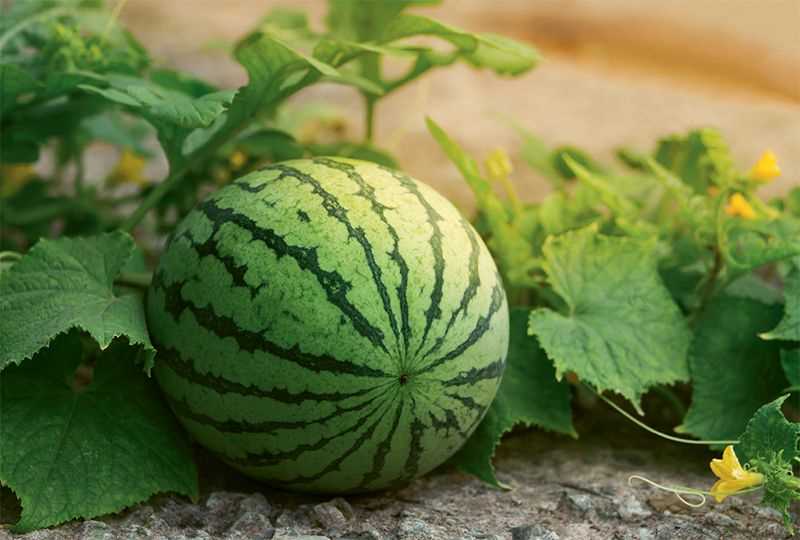
Before planting melons and watermelons, it’s important to prepare the soil properly. Choose a sunny location with well-drained soil. Remove any weeds or debris from the planting area and loosen the soil using a garden fork or tiller. Adding organic matter, such as compost or aged manure, can help improve soil fertility and moisture retention.
2. Choosing the Right Varieties
When selecting melon and watermelon varieties, consider your climate and growing conditions. Some varieties are more heat-tolerant or disease-resistant than others. Read seed packets or consult with a local gardening expert to choose varieties that are well-suited to your region.
3. Starting Seeds Indoors
Start melon and watermelon seeds indoors 2-4 weeks before the last frost date in your area. Sow seeds in seed trays or pots filled with seed-starting mix. Keep the soil consistently moist and provide a heat source, such as a seedling heat mat, to promote germination. Once the seedlings have developed a few sets of true leaves, they can be transplanted outdoors.
4. Direct Seeding
If the weather is warm and frost is no longer a concern, melon and watermelon seeds can be sown directly in the garden. Plant seeds 1 inch deep and 2-3 feet apart in rows or hills. Provide a trellis or support structure for vining varieties.
5. Transplanting Seedlings
If you started your seeds indoors, transplant the seedlings outdoors after all danger of frost has passed and when soil temperatures consistently reach 60°F (15°C) or higher. Dig a hole slightly larger than the root ball of the seedling and carefully place it in the hole. Backfill with soil and gently firm the soil around the plant. Water thoroughly after transplanting.
6. Watering and Fertilizing
Melons and watermelons need regular watering to keep the soil evenly moist. Water at the base of the plant to prevent wetting the foliage, which can lead to disease. Applying a balanced fertilizer every 3-4 weeks during the growing season can help promote healthy growth and fruit production.
7. Pest and Disease Management
Monitor your melon and watermelon plants regularly for signs of pests or diseases. Common pests include aphids, cucumber beetles, and squash bugs. Use organic pest control methods when possible, such as handpicking pests or applying insecticidal soap. Preventive measures, such as crop rotation and proper sanitation, can help reduce the risk of disease.
8. Harvesting
Melons and watermelons are ready to harvest when the fruit easily separates from the vine and the rind is firm and brightly colored. Gently lift the fruit from the vine, avoiding any twisting or tugging that could damage the plant. Store harvested fruit in a cool, dry place until ready to eat.
By following these planting techniques, you can increase your chances of a bountiful harvest of melons and watermelons. Enjoy the sweet and refreshing rewards of your hard work!
Proper Watering and Irrigation Methods for Melons and Watermelons
Watering is a crucial aspect of growing melons and watermelons, as these fruits have high water content and require consistent moisture to produce a bountiful harvest. Here are some expert tips for proper watering and irrigation methods for melons and watermelons:
1. Determine the Watering Schedule
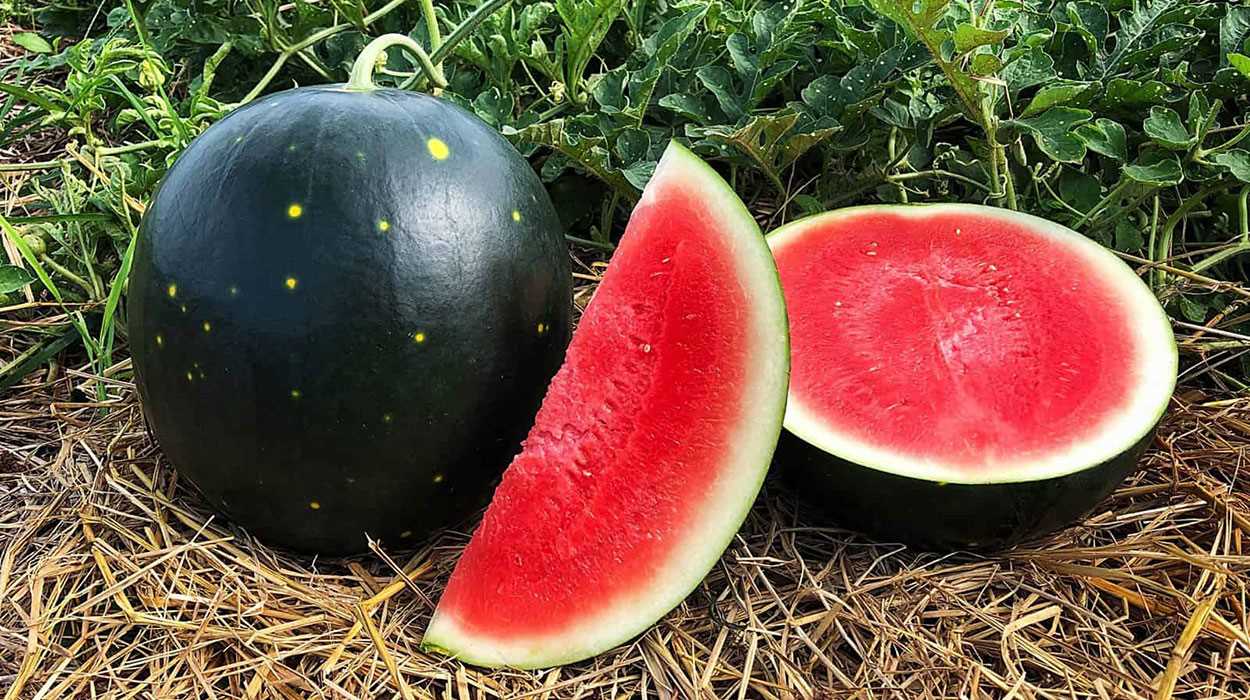
The watering schedule for melons and watermelons varies depending on factors such as climate, soil conditions, and the stage of growth. In general, these fruits require about 1-2 inches of water per week. However, during hot and dry periods, they may need additional watering.
2. Use Drip Irrigation
Drip irrigation is a highly recommended method for watering melons and watermelons. This irrigation system delivers water directly to the roots, minimizing water loss through evaporation and ensuring efficient water usage. Install drip lines or emitters near the base of the plants.
3. Mulch to Retain Moisture
Applying a layer of organic mulch, such as straw or compost, around the base of the plants can help retain moisture in the soil. Mulch also helps suppress weed growth and insulates the soil from extreme temperatures.
4. Water in the Morning
Watering melons and watermelons in the morning allows the plants to absorb moisture before the heat of the day. This helps prevent water loss through evaporation and ensures the plants have adequate hydration to thrive.
5. Monitor Soil Moisture
Regularly check the soil moisture to ensure it stays consistently moist but not waterlogged. Insert your finger into the soil about 1-2 inches deep. If it feels dry at that depth, it’s time to water. If it feels moist, hold off on watering until the top inch of soil dries out.
6. Avoid Overwatering
While melons and watermelons require consistent moisture, overwatering can lead to problems such as root rot and reduced fruit quality. It’s important to strike a balance and provide enough water without saturating the soil.
7. Utilize Watering Aids
In addition to drip irrigation, you can use watering aids such as soaker hoses or water globes to help deliver water directly to the root zone of melons and watermelons. These tools can be particularly useful during dry spells or for plants grown in containers.
8. Adjust Watering as Fruits Ripen
As melons and watermelons approach maturity, it’s important to reduce watering to concentrate sugars in the fruits and enhance their flavor. Gradually reduce the frequency and amount of water as the fruits ripen.
By following these proper watering and irrigation methods, you can ensure your melons and watermelons receive the right amount of moisture to thrive and produce a bountiful harvest.
Pest and Disease Control Tips for Melons and Watermelons
Growing melons and watermelons can be a delightful experience, but it’s important to take precautions to protect your crops from pests and diseases. Here are some tips for effective pest and disease control:
1. Monitor Your Plants Regularly
Regularly inspect your plants for any signs of pests or diseases. Look for pests such as aphids, cucumber beetles, and spider mites, as well as signs of diseases like powdery mildew or bacterial wilt. Early detection can help prevent the spread of pests and diseases.
2. Maintain Good Hygiene Practices
Keep your garden free from debris and weeds as they can harbor pests and diseases. Remove any fallen leaves or fruits to prevent the build-up of pathogens. Also, practice crop rotation to avoid reoccurring pest and disease problems.
3. Use Natural Predators
Introduce beneficial insects like ladybugs and lacewings to your garden. They can feed on common pests like aphids and help keep their populations in check. You can also attract birds that feed on pests by providing birdhouses and bird feeders.
4. Consider Physical Barriers
Protect your melon and watermelon plants from crawling pests by using physical barriers such as row covers or netting. This will prevent them from reaching your plants and laying their eggs.
5. Practice Proper Watering Techniques
Avoid overwatering your plants, as excessive moisture can create a favorable environment for diseases like powdery mildew. Water your plants at the base to prevent wetting their leaves, as this can also contribute to the spread of diseases.
6. Remove Infected Plants
If you notice any signs of diseases or severe pest infestations on a plant, it’s best to remove it immediately to prevent the spread to other plants in your garden. Dispose of the infected plant material properly to avoid recontamination.
7. Apply Organic Pest Control
If chemical control is necessary, opt for organic insecticides or fungicides to minimize the impact on the environment and beneficial insects. Be sure to follow the instructions carefully and apply as directed.
By implementing these pest and disease control tips, you can keep your melon and watermelon plants healthy and productive, ensuring a bountiful harvest.
Fertilization and Nutrient Management for Melons and Watermelons
Fertilization is an essential part of growing healthy and productive melons and watermelons. Proper nutrient management is crucial for the plants to develop strong stems, ample foliage, and abundant fruit. Here are some expert tips to help you fertilize your melon and watermelon plants effectively:
Soil Testing
Before planting melons or watermelons, it’s important to conduct a soil test to determine its nutrient content. This will help you understand what nutrients are already present in the soil and what deficiencies need to be addressed. By knowing the soil’s nutrient profile, you can adjust the fertilizer application accordingly.
Choosing the Right Fertilizer
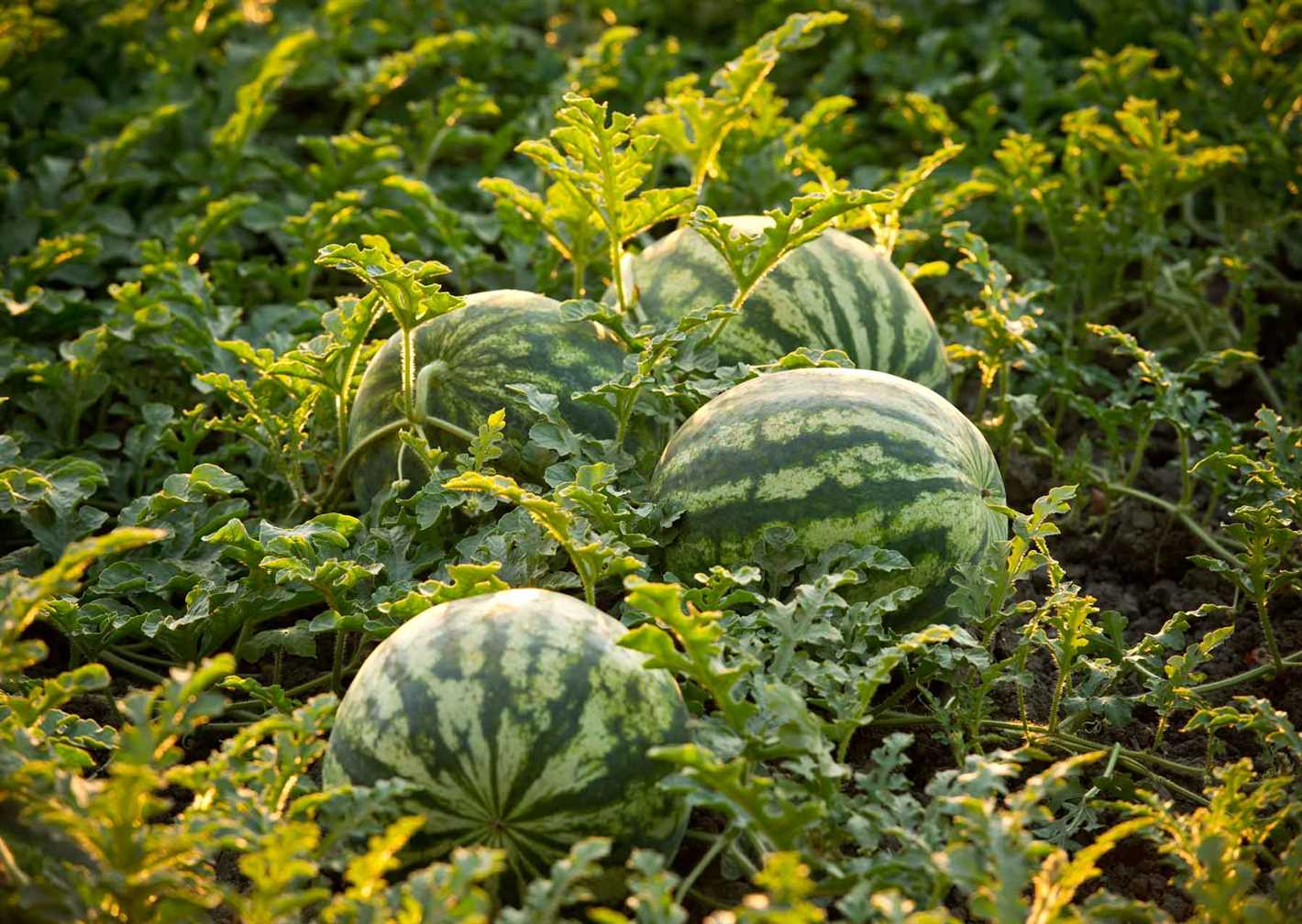
Melons and watermelons have different nutrient requirements at different stages of their growth. It’s crucial to select a fertilizer with an appropriate nitrogen-phosphorus-potassium (N-P-K) ratio to meet these needs. Generally, a balanced fertilizer with equal amounts of nitrogen, phosphorus, and potassium, such as a 10-10-10 or 14-14-14, is suitable for most melon and watermelon varieties.
Applying Fertilizer
When applying fertilizer, it’s important to follow the instructions provided on the fertilizer package and adjust the amount based on the soil test results. It’s best to divide the total fertilizer application into multiple doses throughout the growing season. Start by applying a balanced slow-release fertilizer before planting and then continue with side-dressing applications during the growing season.
Side-Dressing
Side-dressing involves applying fertilizer directly to the soil around the base of the plants. This allows the nutrients to reach the root system more efficiently. Side-dressing should be done when the vines begin to spread and again when the first fruits start to develop. Use a small gardening trowel or a hand cultivator to create a shallow trench around each plant and then add the fertilizer. Afterward, gently cover the fertilizer with soil to prevent it from washing away or coming into direct contact with the plant.
Mulching
Mulching is an effective way to conserve soil moisture, suppress weed growth, and improve nutrient availability. Organic mulches, such as straw or compost, can help enhance the soil fertility over time as they break down. Apply a layer of mulch around the base of the plants, making sure to keep it a few inches away from the stems to prevent rotting.
Monitoring and Adjusting
During the growing season, closely monitor the plants for any signs of nutrient deficiencies or excesses. Common signs of nutrient deficiencies include yellowing leaves, stunted growth, and poor fruit development. If you notice any deficiencies, you can make adjustments by applying a foliar spray or additional side-dressing of the appropriate fertilizer. However, it’s essential not to over-fertilize, as this can cause nutrient imbalances and negatively impact plant health.
By following these fertilization and nutrient management practices, you can provide your melon and watermelon plants with the essential nutrients they need to thrive and produce a bountiful harvest.
Pruning and Training Techniques for Melons and Watermelons
Pruning and training are important techniques for maximizing the yield and quality of melons and watermelons. Proper pruning and training can help improve air circulation, prevent diseases, and promote better fruit development. Here are some expert tips on how to prune and train your melon and watermelon plants:
1. Remove Lateral Vines
One of the key steps in pruning melons and watermelons is removing the lateral vines. These are the side shoots that develop along the main vine. By removing these lateral vines, you can redirect the plant’s energy towards the main vine and the developing fruits. Use clean and sharp pruners to cut off the lateral vines close to the main vine.
2. Pinch off Suckers
Suckers are small shoots that grow in the leaf axils of melon and watermelon plants. These suckers can divert nutrients from the main vine and hinder fruit production. It is important to regularly pinch off these suckers to keep the plant focused on fruit development. Pinch off the suckers when they are small and easy to remove.
3. Train the Vines
Training the vines involves gently guiding them along a trellis or support system. This helps to keep the plants off the ground, reducing the risk of diseases and pests. Secure the vines to the trellis using soft ties or cloth strips, being careful not to constrict the growing vine. As the vines grow, continue to train them horizontally along the trellis, allowing for better air circulation and sun exposure.
4. Prune for Air Circulation
Good air circulation is crucial to prevent diseases like powdery mildew and rot. Prune the leaves and excess foliage that block airflow and sunlight. Focus on removing any yellowing or diseased leaves, as they can quickly spread infections to healthy parts of the plant. Regularly monitor your plants and prune as needed to ensure good air circulation.
5. Remove Excess Fruit
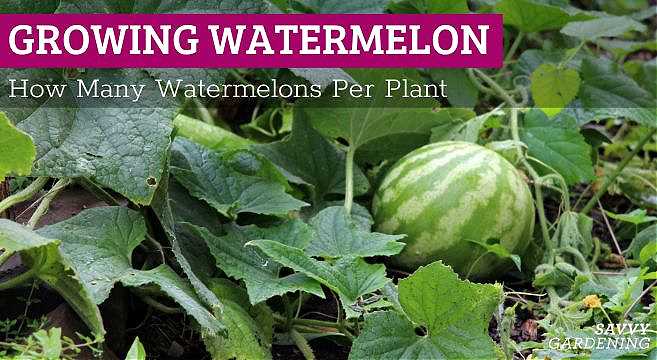
Although it can be tempting to leave every fruit on the plant, it is important to thin out the excess fruit. Overcrowding can result in smaller and less flavorful fruits. Remove any small or misshapen fruits to allow the remaining ones to grow larger. Leave a few well-spaced fruits on each vine to ensure maximum growth and quality.
6. Support Heavy Fruits
As the melons and watermelons develop and grow larger, they may become too heavy for the vines to support. Use slings or fabric hammocks to cradle the fruit and prevent them from breaking off the vine. These supports can be made from old pantyhose or cloth strips tied to the trellis. Make sure to secure the supports well to prevent any damage.
By following these pruning and training techniques, you can encourage healthier plants and increase your chances of a bountiful harvest of delicious melons and watermelons.
Harvesting and Storage Tips for Melons and Watermelons
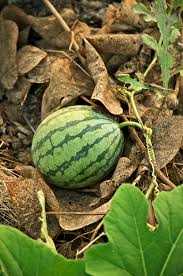
1. Harvesting
Knowing when to harvest melons and watermelons is crucial for achieving the best flavor and texture. Here are some tips to help you determine when to harvest:
- Check the fruit’s size: Melons should reach their mature size, which varies depending on the variety. Most melons will have a firm feel and start to lose their glossy appearance when they are ready to be harvested.
- Look at the color: Watermelons should have a deep, uniform green color and a dull sheen when ripe. For melons, check if the skin has changed color to a yellow or orange hue, depending on the variety.
- Examine the tendril: On many vine varieties, there will be a tendril near the base of the fruit. When it turns brown and dries up, it’s a good sign that the melon or watermelon is ripe.
- Give it a tap: Gently tap the fruit and listen for a deep, resonant sound. A dull thud indicates ripeness, while a high-pitched sound means it’s not quite ready.
2. Harvesting Techniques
When it comes to harvesting melons and watermelons, it’s important to handle the fruit with care to avoid damaging them. Here are some techniques to use:
- Use a sharp knife or shears: Cut the fruit from the vine, leaving a short stem attached. Avoid yanking or pulling on the fruit, as this can damage the plant.
- Support the fruit: Cradle the melon or watermelon in your hand or use a soft cloth to cushion it while cutting. This will prevent any accidental drops or rough handling.
- Handle with care: Melons and watermelons are delicate, so avoid squeezing or dropping them, as this can bruise or crack the fruit.
3. Storage Tips
Proper storage after harvest is essential to maintain the fruits’ quality and flavor. Follow these tips for storing melons and watermelons:
- Store at the right temperature: Melons and watermelons should be stored at room temperature for a few days to fully ripen. Afterward, move them to the refrigerator to slow down the ripening process and extend their shelf life.
- Keep them dry: Moisture can lead to rotting, so make sure the fruits are dry before storing them. Wipe off any excess moisture with a clean cloth.
- Store separately: Melons and watermelons release ethylene, a gas that can accelerate ripening in other fruits. To prevent this, store them separately from other fruits and vegetables.
- Avoid stacking: Place melons and watermelons in a single layer to prevent excessive pressure and bruising.
- Check for rot: Regularly inspect stored melons and watermelons for signs of rot or decay. If you notice any soft spots or mold, remove the affected fruit to prevent contamination.
“Question-Answer”
What is the best time to plant melons and watermelons?
The best time to plant melons and watermelons is in the late spring when the soil has warmed up and there is no longer a threat of frost. In most regions, this is usually around May or June.
How much space do melon and watermelon plants need?
Melon and watermelon plants need plenty of space to grow. It is recommended to plant them at least 2-3 feet apart to ensure they have enough room to spread their vines and fruit. Trellising or using a vertical support can help save space.
What kind of soil do melons and watermelons prefer?
Melons and watermelons prefer well-draining soil that is rich in organic matter. They also need full sun to thrive, so make sure to choose a location in your garden that receives at least 6-8 hours of direct sunlight each day.
How often should I water melon and watermelon plants?
Melon and watermelon plants need regular and consistent watering. It is important to keep the soil evenly moist, especially during hot and dry periods. Water deeply once or twice a week, providing about 1-2 inches of water each time.
Should I use mulch around melon and watermelon plants?
Yes, using mulch around melon and watermelon plants can be very beneficial. Mulch helps to retain soil moisture, suppress weeds, and regulate soil temperature. Organic mulch, such as straw or wood chips, works best for melons and watermelons.
How do I know when melons and watermelons are ready to harvest?
Melons and watermelons are ready to harvest when they have a rich color, a sweet fragrance, and the stem easily separates from the fruit when gently tugged. Additionally, the underside of the melon or watermelon should have a yellow or creamy color.
Can I save seeds from my melons and watermelons to plant next year?
Yes, you can save seeds from your melons and watermelons to plant next year. To save seeds, simply remove them from the fruit, rinse off any pulp or debris, and allow them to dry completely on a paper towel. Store the dried seeds in a cool, dry place until you are ready to plant them.







